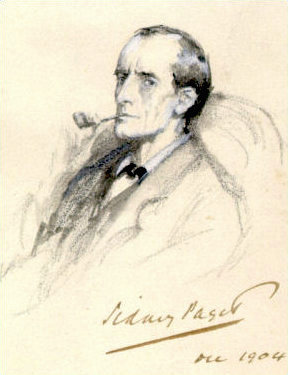
Sherlock Holmes is a fictional detective created by British author Arthur Conan Doyle. Referring to himself as a "consulting detective" in his stories, Holmes is known for his proficiency with observation, deduction, forensic science and logical reasoning that borders on the fantastic, which he employs when investigating cases for a wide variety of clients, including Scotland Yard.

Professor James Moriarty is a fictional character and criminal mastermind created by Sir Arthur Conan Doyle to be a formidable enemy for the author's fictional detective Sherlock Holmes. He was created primarily as a device by which Doyle could kill Holmes and end the hero's stories. Professor Moriarty first appears in the short story "The Adventure of the Final Problem", first published in The Strand Magazine in December 1893. He also plays a role in the final Sherlock Holmes novel The Valley of Fear, but without a direct appearance. Holmes mentions Moriarty in five other stories: "The Adventure of the Empty House", "The Adventure of the Norwood Builder", "The Adventure of the Missing Three-Quarter", "The Adventure of the Illustrious Client", and "His Last Bow".
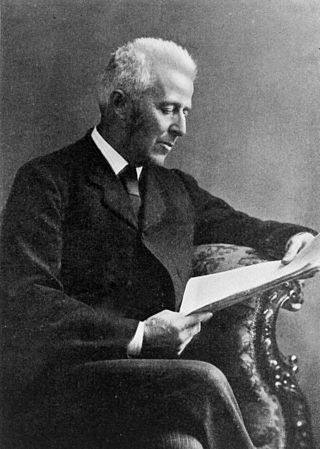
Joseph Bell FRCSE was a Scottish surgeon and lecturer at the medical school of the University of Edinburgh in the 19th century. He is best known as an inspiration for the literary character, Sherlock Holmes.
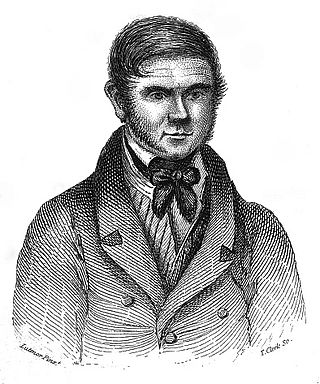
The Burke and Hare murders were a series of sixteen murders committed over a period of about ten months in 1828 in Edinburgh, Scotland. They were undertaken by William Burke and William Hare, who sold the corpses to Robert Knox for dissection at his anatomy lectures.
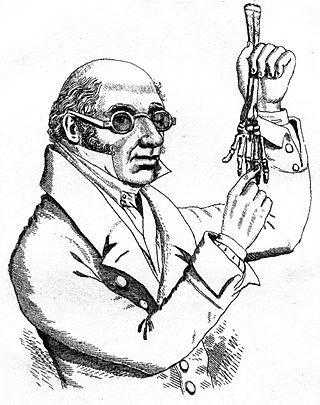
Robert Knox was a Scottish anatomist and ethnologist best known for his involvement in the Burke and Hare murders. Born in Edinburgh, Scotland, Knox eventually partnered with anatomist and former teacher John Barclay and became a lecturer on anatomy in the city, where he introduced the theory of transcendental anatomy. However, Knox's incautious methods of obtaining cadavers for dissection before the passage of the Anatomy Act 1832 and disagreements with professional colleagues ruined his career in Scotland. Following these developments, he moved to London, though this did not revive his career.

The Valley of Fear is the fourth and final Sherlock Holmes novel by British writer Arthur Conan Doyle. It is loosely based on the Molly Maguires and Pinkerton agent James McParland. The story was first published in the Strand Magazine between September 1914 and May 1915. The first book edition was copyrighted in 1914, and it was first published by George H. Doran Company in New York on 27 February 1915, and illustrated by Arthur I. Keller.
Claud Hamilton, 2nd Baron Hamilton of Strabane was the founder of the Strabane branch of the Hamiltons. He died relatively young at about 32 and his wife, Jean Gordon, married Sir Phelim O'Neill, one of the leaders of the 1641 rebellion, after his death.
Sir George Hamilton, 1st Baronet of Donalong and Nenagh, was born in Scotland, but inherited land in Ireland. Despite being Catholic, he served his Protestant brother-in-law, the 1st Duke of Ormond, lord lieutenant of Ireland, in diplomatic missions during the Confederate Wars and as receiver-general of the royalists. He also defended Nenagh Castle against the Parliamentarians during the Cromwellian conquest of Ireland. Hamilton was father of Anthony, author of the Mémoires du Comte de Grammont, of Richard, Jacobite general, and of Elizabeth, "la belle Hamilton".
Ruth Dudley Edwards is an Irish Unionist historian and writer, with published work in the fields of history, biography and crime fiction, and a number of awards won. Born in Dublin, Ireland, she has lived in England since 1965, and describes herself as British-Irish. Her revisionist approach to Irish history and her views have sometimes generated controversy or ridicule. She has been a columnist with the Irish Sunday Independent, the Daily Telegraph and Sunday Telegraph, and The News Letter.
Robert Walter Dudley Edwards was an Irish historian.

Sir Arthur Ignatius Conan Doyle was a British writer and physician. He created the character Sherlock Holmes in 1887 for A Study in Scarlet, the first of four novels and fifty-six short stories about Holmes and Dr. Watson. The Sherlock Holmes stories are milestones in the field of crime fiction.
Dudley Persse (1625–1699) was an Anglo-Irish landlord and Anglican priest.

Sir Arthur Conan Doyle KStJ, DL (1859–1930) was a Scottish writer and physician. In addition to the series of stories chronicling the activities of Sherlock Holmes and his friend Dr John Watson for which he is well known, Doyle wrote on a wide range of topics, both fictional and non-fictional. In 1876 Doyle entered the University of Edinburgh Medical School, where he became a pupil of Joseph Bell, whose deductive processes impressed his pupil so much that the teacher became the chief model for Holmes. Doyle began writing while still a student, and in October 1879 he had his first work—"The Mystery of the Sasassa Valley"—published in Chambers's Journal. He continued writing short works—both fictional and non-fictional—throughout his career, and had over 200 stories and articles published.
The Auditor of the Literary and Historical Society at University College Dublin, Ireland is a position elected by the members of the society. In this setting, the term auditor has no connection with accounting but means "a position corresponding to that of President of the Union at Oxford or Cambridge". Some former auditors of the society have gone on to careers of high distinction in law, politics, medicine, academia, journalism, and other endeavours.
John Francis Moriarty PC, QC was an Irish lawyer and judge.

The Kildare Street Club is a historical member's club in Dublin, Ireland, at the heart of the Anglo-Irish Protestant Ascendancy.

Urney is a townland and civil parish in County Tyrone, Northern Ireland. Both townland and parish are situated in the historic barony of Strabane Lower. It lies within the Derry City and Strabane area.
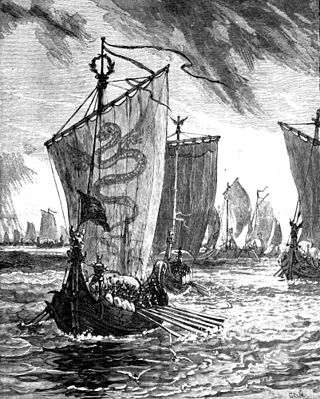
Gebeachan, also known as Gébennach, and Gebechán, was a tenth-century King of the Isles. He seems to have been a subordinate to Amlaíb mac Gofraid, King of Dublin, and is recorded to have fought and died at the Battle of Brunanburh in 937.
The Irish Historical Research Prize is a history book prize awarded biannually since 1922 by the National University of Ireland (NUI) to a senior historian for the best new work of research on any period in the history of Ireland. It is considered the most prestigious prize in the study of Irish history.











